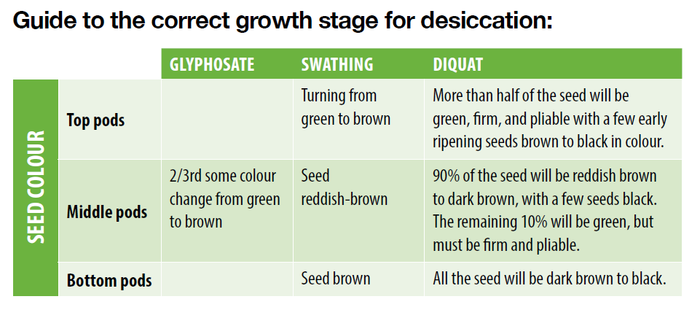When it comes to desiccation timing is critical. It is not just about ensuring a smooth and efficient harvest, it is also about maintaining the crop’s true yield potential, says Hutchinsons Neil Watson.
“Desiccating too early not only curtails seed growth prematurely, it also adversely impacts the crop’s oil content. Finally, you also risk having a higher percentage of immature “red seed” within the sample, potentially leading to rejection if this exceeds 5% of the sample.”
Mr Watson points out that It is not the pod colour but the seed colour that is the best indicator of maturity.
“During periods of high temperatures, pod colour can often overestimate the crop’s maturity, from a sun burn/bleaching effect on the exposed upper canopy, whilst during periods of slow senescence it can underestimate the crop’s maturity.”
When taking representative samples from the plant, choose areas of the field that are representative of the crop itself, he says.
“In most crops, take pods from the main raceme primarily as most of the yield will come from here. In thin crops or where growth regulators have been used, a higher proportion of the yield is likely to come from the side branches, consequently, sampling needs to be adjusted to take this into account.”
“If there is some minor variability in the crop’s maturity, target the timing to the more backward section of the field. If there are major variations in the field, the different parts of the field will need to be treated as separate fields and time the desiccant appropriately.”




